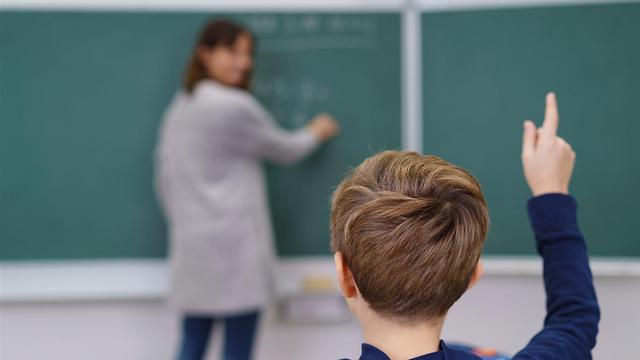
Religious girls’ schools leading in Israeli education
New website launched by Education Ministry presents facts pertaining to cross-section of Israeli high schools according to several parameters, such as graduation and dropout rates.
The Education Ministry launched a new website on Tuesday morning providing extensive data on high schools in Israel, illustrating that religious girls' schools are leading the pack in Israeli education performance.
The parameters include high school diploma eligibility rates, grades, the extent of advanced placement classes and dropout rates.
The data, which appears in a site titled "Transparency in Education," includes 21 parameters that are divided into four groups: learning and achievements, perseverance and dropping out, the education staff, and values and educational environment.
The data also includes several variables, including teachers' education, the rate of students diagnosed with learning disabilities, the percentage of students in special education, and the percentage of immigrant students.
Apart from the above, the website also includes the ministry's budgetary investments on the national, district, municipal and school levels, as well as a mapping of differential budgeting whose implementation is now entering its fourth year.
The high school diploma eligibility index refers to high schools and other educational institutions of at least 300 students.
Two religious girls' high schools led the list for high school diploma eligibility—the Kfar Pines ulpana in the Menashe Regional Council and the Bnei Akiva Even Shmuel ulpana—with 100 percent of students being eligible.
These two schools are joined at the top of the list by four other high schools for religious-Zionist girls, indicating a trend.
Ranked second after the religious girls' schools is the Beit Jann comprehensive high school, once again standing out with 99.5% of its students being eligible for a diploma. Tel Aviv's Shevah Mofet school boasts an almost similar record with 99.3%.
Coming in at a joint fourth place are the Max Shein Ort in Rehovot and the Horev religious girls' school in Jerusalem with 99.2%. In fifth place is the Rabbi Shauli religious girls' school of Ashdod with 99.1%. Rounding out the list are the Herzliya practical engineering school and the Petah Tikva Yeshurun religious girls' school with 98.9%, the Kfar Yarok agricultural school in Ramat Hasharon with 98.8%, Ironi Alef in Tel Aviv with 98.5%, Rabin high school in Tel Aviv with 98.4% and the Baharan religious girls' school in Gedera with 98.3%.
Most of the schools at the top of this list are in the uppermost (1-2) quintiles socioeconomically. Irregular in this regard are the high school in Beit Jann, classified in the fifth and lowest quintile, and the Rabbi Shauli girls' high school in Ashdod, ranked in the third quintile.
At the bottom of the list are 18 Haredi high schools with 0% diploma eligibility, as well as two state schools in Arab towns with the same result: the Sur Baher high school and the Dar al-Marefa madrasa, both in Jerusalem.
The bottom of the list also shows a correlation between the schools occupying that part and the bottommost socioeconomic quintile, with only two exceptions: Ankori high school in Tel Aviv ranked in the first quintile and the Haredi Beit Yaakov ranked in the second.

Dropout data
The Ministry of Education's data presents school dropout statistics as well. At the top of this criterion are either Haredi schools or ones in Arab towns.
In first place is the Beit Hanina comprehensive high school, 18.2% of whose students are not able to graduate. In second place is the Dar al-Kalam school of Rahat with a 14.8% dropout rate. In third place is—once again noted negatively—the Dar al-Marefa school of Jerusalem with a 13.3% dropout rate, and in fourth is the Beit Levy Itzhak ultra-Orthodox school of Safed with a 12.9% dropout rate. Lastly, in fifth place is the Tomashin al-Mutnabi school of Kuseife with a 9% dropout rate.
This parameter also shows a high correlation between high dropout rates and low socioeconomic standing. All of the schools in the top ten are ranked in the two bottommost quintiles, apart from Ankori—ranked in the first.
In 33 high schools with more than 300 students there were no students dropping out at all, including the Julis comprehensive high school, the Ort Beit She'an comprehensive religious high school, the Beit Malka religious school of Jerusalem, the Max Shein Ort of Rehovot, Bar Ilan of Netanya, Shimon Ben Tzvi of Givatayim, Shuafat high school of Jerusalem, Shaur comprehensive school of Majd al-Krum, Tarshiha comprehensive school of Ma'alot-Tarshiha and others.
Who gets involved?
On the parameter of schools encouraging social involvement, such as volunteer work in the community, activity in youth movements and school leadership, the Bar Ilan religious high school of Netanya leads the field with an 82.7 grade. In second place is another religious state school: the Ofra ulpana of Mateh Binyamin with an 80.8 grade. In third is the Lod Tomashin comprehensive school with 79.3, in fourth the Kfar Pines ulpana of Menashe with 73.3 and in fifth Makif Zayin of Ashdod with 73.1.
At the very bottom of the social involvement list is the Kfar Silver comprehensive school of Hof Ashkelon, which received the lowest possible grade of 24. Second to last is the Abu Gosh comprehensive school with 29.7, with the Israel Goldstein Youth Village, 33.1, the Rabin Beit Hinuch of Tel Mond, 38, and Makif Yud Alef of Rishon Lezion with 39 bringing up the rear.












